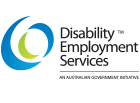Debbie Brooks of atWork Australia speaks with FM about a recent study that found high earners aren’t prioritising workplace diversity.
Debbie Brooks is the senior manager of employer engagement at atWork, an employment services provider that looks after a number of programs ranging from disability employment services, Jobactive, ParentsNext and Indigenous employment services. Mainly focused on disability employment, Brooks partners with businesses large and small to place people in jobs.
For Brooks and atWork, these figures revealed a dire need to re-engage with high earners and business leaders. Here, Brooks speaks with FM about the task at hand.
FM: There’s a divide between low earners and high earners when it comes to prioritising diversity in the workplace. Why do you think that is?
Good question. There are a couple of things we believe are happening. First, COVID-19 can put a bit of a funny spin on things. More people are staying put in their current work, so their priorities aren’t necessarily around diversity in their workplace; their priority is around keeping their income. Also, as I’ve seen with my work and talking with different businesses, as you get into higher roles and areas of responsibility, diversity isn’t always on the radar, because you’ve got your area of responsibility that you’re looking after and that’s kind of what you’re focusing on. I think as you move into more senior management roles, and you start to be in that higher income earning bracket, diversity falls off the radar.
Is the lower earning portion of the population more diverse than the higher earning side? Is that reflected in the results?
We looked at that as well. People with a disability or Indigenous workers, for example, have much higher unemployment rates. So their rate of employment is at 48 percent and 46.6 percent (respectively) for those two groups, whereas the rate of employment on average for Australians is 66.2 percent. You would actually expect the amount of people more likely to prioritise diversity to be higher if it was just those diverse groups in those lower income earning brackets. What that shows is that actually all lower income earning brackets are more likely to prioritise diversity.
Just speculating here, but we know that youth value diversity really highly – [youth] would generally have a lower income bracket too, so that would be a contributing factor. So perhaps that will change over time as that group progresses through.
The results are not exactly positive. What do they mean for atWork?
For us it’s about educating. You’re right, it’s not the most positive, but it’s a really great opportunity for us to get the word out there and really educate some of those leaders around the benefits of diverse teams. Also in this economic time, we’re finding that people have to be a little bit more open to looking at attracting talent, because there are just fewer people on the market. There are so many factors as to why that is the case, you know, maybe it’s a lack of overseas workers, or people just staying put – so it’s a really great opportunity for us to promote the benefits and get people to open their eyes to a more diverse workforce.
And how do you do that?
We’re talking to businesses all the time. At atWork, one of the big things we’re doing at the moment is disability awareness training that we offer free of charge to our employers, employers that are interested in knowing what we are [here] for. So we kind of promote. I guess people are sometimes scared about employing people with a disability, so we provide some training to dispel some of those myths and talk about why it’s great to employ somebody with a disability, and how easy it actually is.
Do you have a position on the use of quotas or diversity policies?
There are a lot of different schools of thought around quotas. I mean, for us, at atWork, we don’t necessarily have a position on that, but anything that starts the conversation and gets the ball rolling is good. Because we get to then jump in there and talk about the benefits and really show that diversity and inclusion is the way to go.
A lot of low earners will eventually become the high earners, and hopefully keep their values on diversity. How hopeful are you for the future?
I’m really hopeful for the future. I think, even just the time that I have been here, we’re seeing a shift. Every day we’re hearing really great stories about businesses that are embracing diversity and amazing stories about lives being changed through employment. For me, day-to-day, I can’t help but feel really optimistic about it. Of the businesses that I talk to, there are more and more that are opening that door and wanting to have those conversations, they’re wanting to make real change. Although the stats and findings don’t necessarily reflect that, anecdotally I’m hearing that things are really changing. And I think what we touched on before, with the youth moving through, I think that will continue to change as well, so the more we can get the word out there, the better.
Article by Facility Management Magazine 5 October, 2021



